
The essential Walvis Bay, Pelican Point and Sandwich Harbor private experience.
Namibia is a country of amazing contrasts. This is evident wherever you look, and the difference between Walvis Bay and Sandwich harbor is a fine example. Walvis Bay is a booming busy harbor town, and the harbor at Sandwich Harbor is nearly untouched nature. It has not always been this way, there were times when Sandwich was a more preferred and better developed harbor than Walvis Bay! On this new tour from Awesome Chapters you will learn the history in the best way possible, by seeing each bit for yourself!
You will be shown the best parts on this spectacular expansive tour of Walvis Bay, Pelican Point and Sandwich Harbor, which covers the two harbors of central Namibia. The route covers nearly 200 km of beaches, sand dunes and mudflats in over six hours, so it’s very much a nature tour with some culture and history thrown in for good measure. You will see the wildlife of the area and take home absolutely stunning pictures and a good story to tell.
Read the details of the tour, and then join us for a great adventure by booking this tour!

Tidal Access 
Flamingo in wetlands 
Hut buried on beach
Services at your disposal
You will only get the best service at Awesome Chapters. Your private tour guide will pick you up at your address anywhere in Walvis Bay with the tour vehicle, free of charge. Your pickup time is not fixed, but agreed upon during the booking process. With Sandwich Harbor, access to the harbor is tidal. Should you need help in picking the best time to go, contact us. If you are arriving on a cruise liner, you will be collected you from the ship inside the harbor gates. You are also able to switch around the locations of this tour to ensure access to Sandwich harbor.
Should you wish to be picked up outside of the Walvis Bay area, just cover our fuel costs with a small transfer fee.
On this adventure to Sandwich harbor and Pelican Point, you always have still water as a standard, but if you want any other refreshments on hand during the tour, please mention it during the booking process. A picnic in stunning surroundings is the cherry on top of this fantastic tour. If you have any special requests in terms of food, it will be happily fulfilled because your enjoyment of this trip is paramount. Continue reading for a detailed description of what to expect.
Walvis Bay and Wetlands
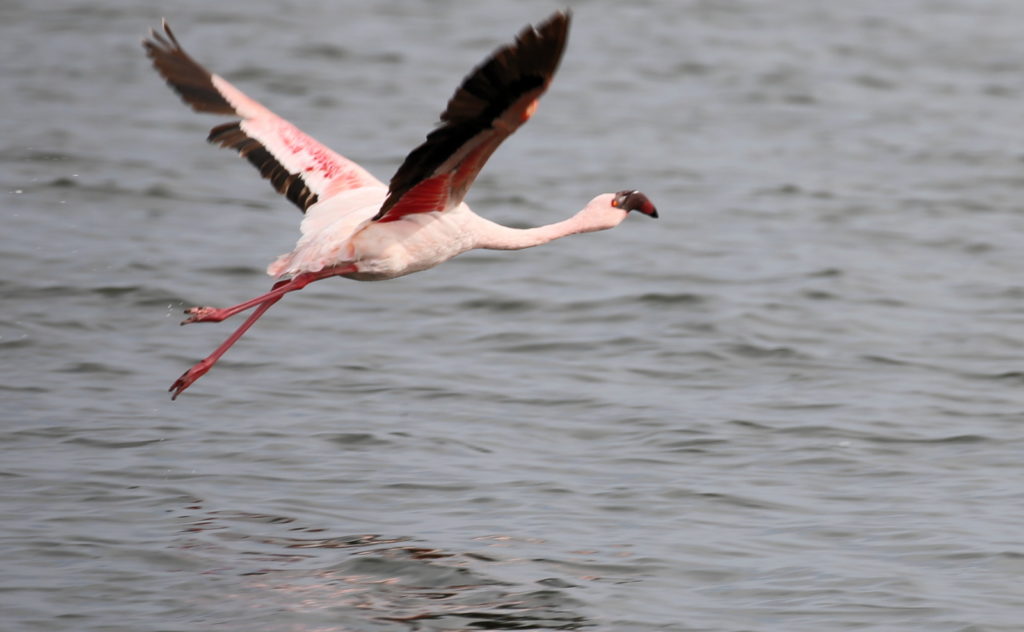
Starting with a slow drive past the extravagant houses of the elite inhabitants of Walvis Bay with the view over the lagoon you will see the nicest part of Walvis Bay. With a stop at the breath taking Lagoon to take in the beauty of the Flamingo the mood for your tour is set. The Flamingo is present all year round, so you are guaranteed a good sighting. The lagoon and surrounding wetlands is a declared RAMSAR site, it is teeming with wildlife.
Situated in the wetlands South of Walvis Bay is the Walvis Bay Salt Holdings processing plant. The very fertile sea water turns pink when highly concentrated. This is due to a micro-organism that lives in the water. The regular shapes of the pans plus the pink water makes for some very striking and unique subjects in photographs. You will be taken to the top of a dune close by the central processing plant to get a good view of this phenomenon. The drive up the dune also serves as a small demonstration of the sand driving at Sandwich harbor.
The plant pans are also home to a respectable array of bird species, including Lesser and Greater Flamingo, Great White Pelican, Heron/Egret, Mallard Duck and many more smaller species. On windy days there is a thick foam at the edge of the pans, this is plankton and completely natural and safe.
Namib-Naukluft park

Sandwich harbor is situated in the Namib-Naukluft park, 57km South of Walvis Bay. The border of the Namib Naukluft park is about halfway down to Sandwich harbor. Permits for visiting Sandwich harbor in this park is required, and included in the tour. The route down to Sandwich harbor is quite varied. Driving on deep sand tracks and across mud flats and along the beach. On the beach there is good a chance to see Cape Fur Seals and Black Backed Jackal.
Along the way there is much more to see, and your private guide will point out the interesting features of the landscape on the way to Sandwich harbor. The small rounded dunes are caused by a shrub (Salsola Nollothensis) growing in them. Your guide stop at all the interesting bits along the way, for as many photos as you want. The pace of the entire tour is relaxed.
Access to Sandwich Harbor
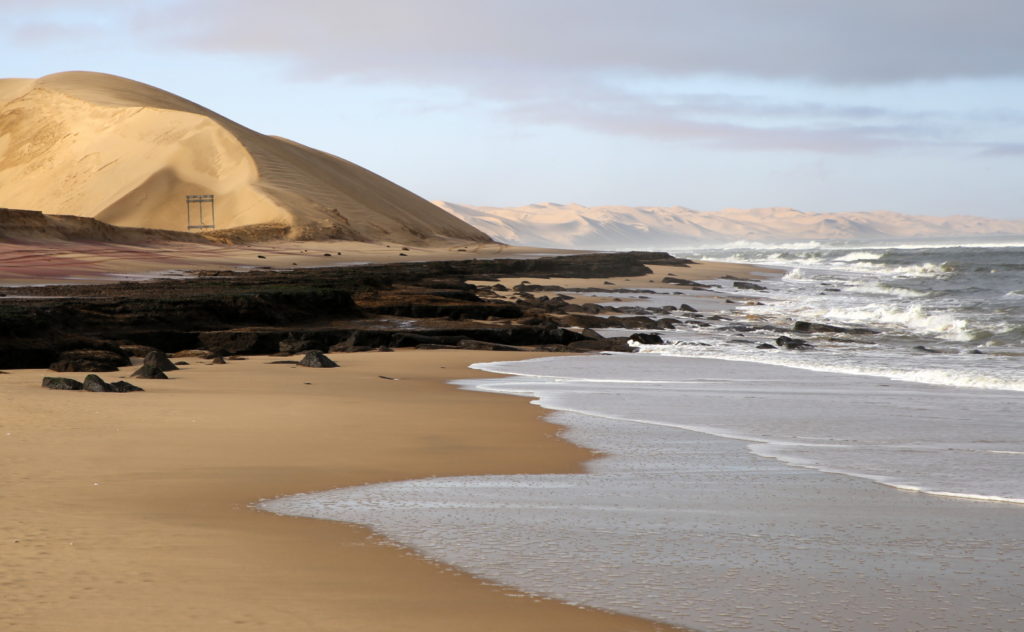
Access to Sandwich harbor is tidal, in that the last five kilometers the dunes and the ocean meet, one can only drive in between the high and low water marks. It is of course best to pick a time for your tour that coincides with a tide low enough to enter. There are tide tables and expert help available.
The dunes here are truly impressive with beautiful textures and colors. In some areas there is a purple sand that is made up of garnets close to Sandwich Harbor. The mud in the picture above is slowly breaking up, and makes for an interesting experience when entering this area.
Sandwich Harbor
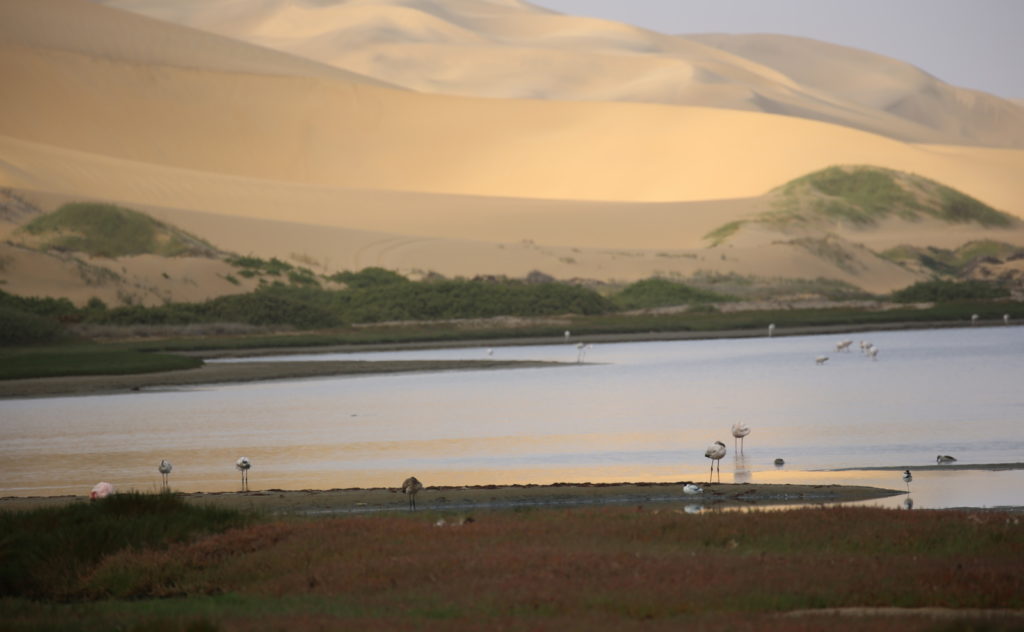
The harbor itself has beautiful wetlands consisting of two lagoons where many bird species are found. Photographic opportunities here are spectacular: The wetlands are untouched nature, and the dunes magnificent. Over the years this landscape has changed quite a bit, and even today the dunes are never quite in exactly the same place. You have the opportunity to go up the dunes for a better lookout over the harbor and the dunes around. If you want a lift up to the lookout for a better view, or a little deeper into the dunes just ask.
Should mother nature play along, this is where the picnic is served. There is nothing quite like soaking in the view with real peace and quiet with your friends. Access to the lagoon area is prohibited by vehicle, but you are welcome to take a stroll in these wetlands. Your private guide will come along if you want, and point out some of the more interesting plant species common here.
Fauna & Flora
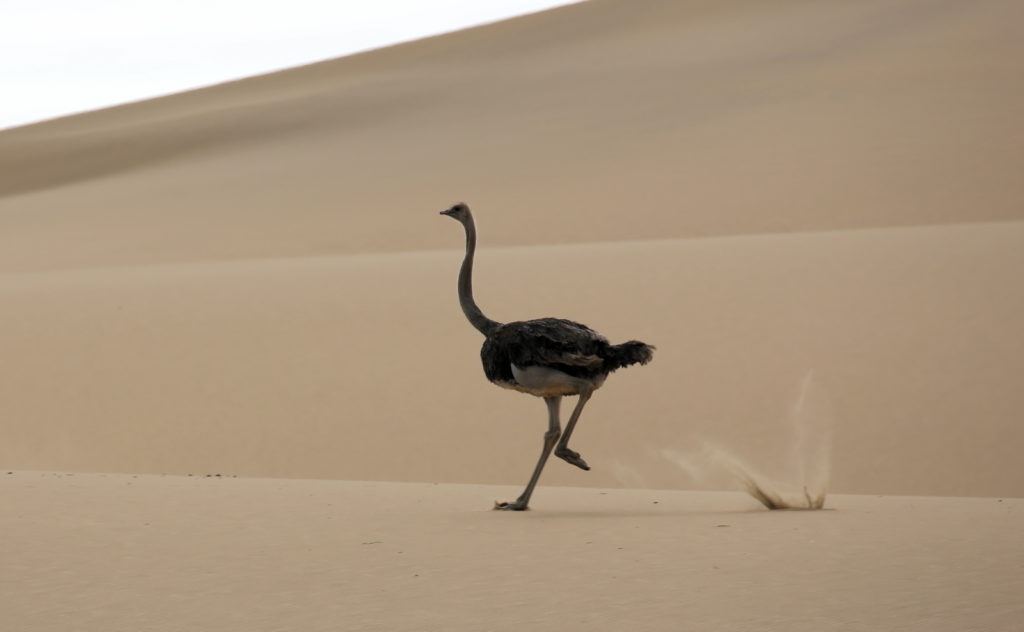
The return journey usually has a bit of extra time to look around. As this is a nature park, there is a fair amount of wildlife. Regularly spotted is Springbuck, Ostrich, Oryx and black backed jackal. Two plant species of note in this area are the !Nara and the Herero Caper Bush. Both will be pointed out to you along the way.
To access the most interesting wildlife, there is a little dune driving involved. Your guide is an expert in driving in sand, and will make the journey safe and relaxing. Unless you want to go slide down a massive dune’s slip face just for fun. You can tune the tour to have as much or as little excitement in the dunes as you like.
The sand spit of Pelican Point

The sand spit that forms the protective barrier of Walvis Bay harbor is changing constantly. On some days with very high tides it is covered in water, making for an adventurous journey to Pelican Point. Other times it is bone dry, and you can see the salt roads that forms naturally on the flats on the way to Pelican Point.
The shape of the coastline here is constantly changing with the ocean eating away at some places, and depositing the sand in others. At Donkey Bay, or “Skeleton Bay” as it is known in the international surfer community, the erosion was once so bad that it was once thought that the area around the lighthouse was turning into an island. The remnants of a service road to try and stop this is still visible up to where it was washed away.
When the lighthouse was constructed at Pelican Point in the early 1900’s, it was built at the tip of the sand spit. The spit is still growing even today, and every few years a radar reflector was added to warn vessels approaching in the fog where the spit had grown to. The tip of the sand spit is where the bulk of the Cape Fur Seal colony is hanging out.
In contrast with Sandwich harbor, the harbor of Walvis Bay is a busy one, with plenty of ships on anchor and Walvis Bay itself visible on clear days.
Pelican Point lighthouse
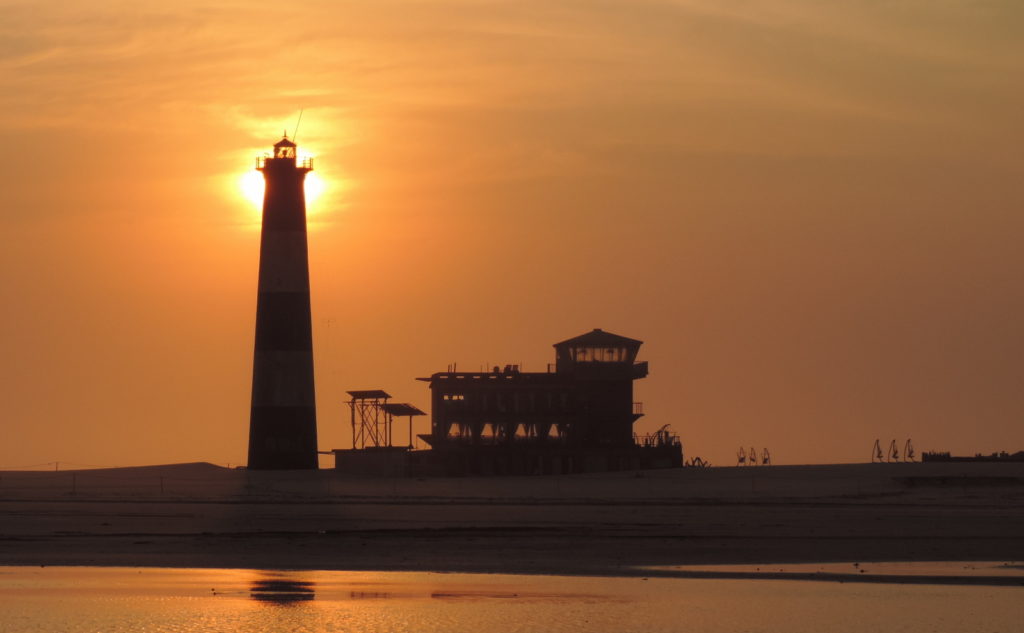
Guarding over Walvis Bay is the lighthouse at Pelican Point. Chief of which is the lighthouse, constructed in 1932. It’s construction is from cast iron, and was erected by the South African government to replace a much smaller structure. If you are interested in a more detailed history Pelican Point and of this structure, read the link here. The photo above was taken close to sunset after quite a big storm dumped a lot of water in the depression between the Lighthouse and the iron shipwreck also located at Pelican Point.
The adjoining structure is now a very nice boutique hotel, Pelican Point Lodge. Access to this hotel is restricted to guests of the hotel only. As the lighthouse is no longer an active navigational beacon, it’s light has been replaced by a much dimmer one.
The remains of a railroad track links the lighthouse with a concrete jetty on the Walvis Bay side of the sand spit. The jetty was used to land fuel at Pelican Point for refueling the generators for the lighthouse light. The fuel loaded on to a small cart that is still visible. This tram and oil drums on it was pulled by a horse to the lighthouse. Around the jetty is the edge of the Cape Fur Seal colony, and you can usually find one hiding under the jetty.
Shipwreck – Norwegian whaler
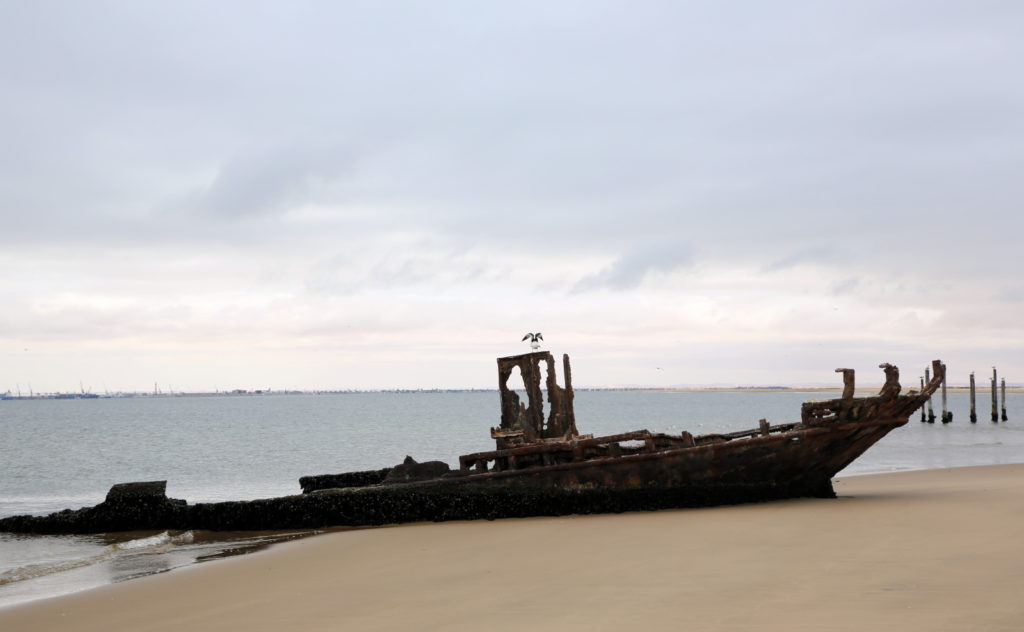
This little shipwreck near to the Lighthouse of Pelican Point lays bare a part of the history of Walvis Bay that is quite sad and disturbing. The name of the wreck is unknown, but what is known is that it was part of a Norwegian 14 killer whaler fleet employed to hunt the Wales at Walvis Bay to near extinction. It is very sad that in a town with a name that is literally “Whale Bay” it is extremely rare to have a whale sighting. You can still see whale bones dotted around Walvis Bay to this day, and there is no escaping this part of the history of Walvis Bay.
Whales were hunted by small and very maneuverable ships like this one, harpooned and brought to shore. The death of the whales were horrendous and lasted hours. Later large floating factory ships rendered Walvis Bay obsolete. If you are interested in this history, there is more about it here, here and here.
Due to the world-wide conservation efforts, whale sightings are becoming more common in this area. It is a very slow process due to the slow gestation and reproductive cycle of whales.
Wildlife – Cape Fur Seal colony
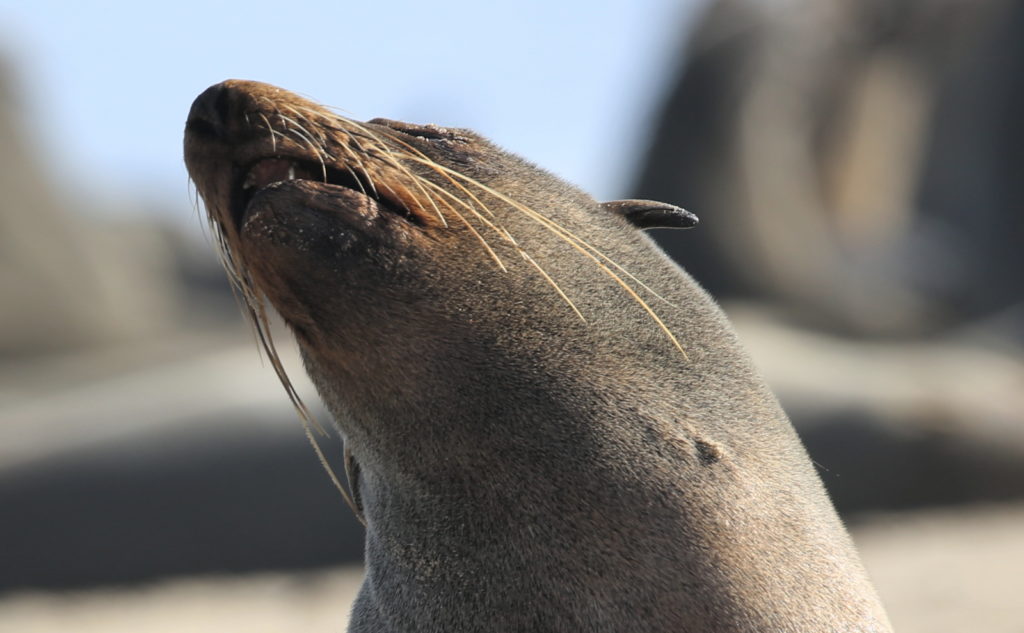
Pelican point is home to quite a bit of wildlife, most notable is the Cape Fur Seal colony. At over a hundred thousand strong, the Cape Fur seal colony is a very large colony, and growing each year. Due to the amazing virility and hunting success of the Cape Fur Seal, the numbers of this colony is out of control.
Due to the whaling efforts in the first half of 1900’s, most of the natural predators to the Cape Fur Seal has been removed, and is largely the cause of this population explosion. All along the coast of Namibia you can find more colonies of this Cape Fur Seal, the most notable is the colony at Cape Cross.
Your guide will tell you a little more about the Cape Fur Seal on the tour, as well as other species of wildlife that is also common here. Feeding on the Cape Fur Seal pups are Black Backed Jackal. With a bit of luck we will also see a specimen or two of them. These are also to be found, but normally in packs no larger than four. The bulk of the remainder of wildlife is avian, mostly Flamingo, and very seldom Pelican. Black backed Cape Cormorant are quite common towards Donkey Bay.
Details Summary
- Duration: 6 hours
- Activity level: Moderate to relaxed
Inclusions
- Free pickup in Walvis Bay
- Private, air conditioned transport
- Bottled water, still & sparkling.
- Local guide
Optional extras
- Pickup in the harbor
- Picnic in Nature on the tour
- Special beverages
- Pickup in Swakopmund
Booking – Email
If you are interested in this tour, you are welcome to contact us for some human interaction. The booking will be made for you with the information from our chat. We love hearing from you, so even if you do not want to book the tour, and just want some more information, you are still welcome to drop us an email.
Alternatively, drop us a line on the contact form below and we will come back to you!